コラム
落合憲弘
John Sypal
タカザワケンジ
なぎら健壱

Yoshihito Muta is one of my absolute favorite photographers.
Muta has no photobooks, no website, not even an Instagram account. His preferred means of sharing photographs- and the only way I think I’ve ever seen them- is through prints in exhibitions at 3rd District Gallery in Shinjuku.
According to the gallery’s website, Muta has held fifty-five exhibitions there since 1996 (with forty-nine of these between 2009 – 2022). I’ve made a point to see as many of his shows as possible, always excited as I make my way up the Showa-steep stairwell to the fourth-floor gallery. No matter sort of work he’s exhibiting, Muta’s consistent, penetrating line of sight and unwavering editing skill creates a visual experience that is always deeply satisfying.
Some of Muta’s shows are part of his ongoing, diaristic “Record of Things” series- each one presenting a selection of black and white, date-stamped photographs taken with his Konica Hexar. These he hangs chronologically-ordered around the gallery. Other exhibitions I’ve seen have ranged from dozens of 4x5 photos of path above a reclaimed sewage ditch in Suginami-ku to a superb set of snapshots taken over five hours in a single afternoon in Rangoon.
“Anpotan Pokan, Yin and Yang” is unusual for him in that it’s comprised of digitally-captured, inkjet-printed images. It’s funny- in this city of what, 17 million(?), I’ve ran into Muta twice this year on back streets far outside the usual Shinjuku gallery circuit where I’d expect to meet him. Both times he had a massive Canon DLSR and flash around his neck.
No matter the medium, much of Muta’s work suggests an aura of surrealism- and by “suggest” maybe I mean “gobsmacks me with the clarity of such penetrating mystery”.
While some photographers’ work is overshadowed by a demonstration of planned effort by the hand of the artist- a method that often results in contrived, preachy work- Muta instead eschews stylistic artifice. His game is Straight-photography. He has respects and yields to, the medium. Rare are photos of movement- the stillness and how its framed perhaps enhances his perception of the mystery of place or moment. His use of such transparency shows he has nothing to hide. The merging of intuition and phenomenon and camera is enough to make compelling work. Who needs heavy post-production when you’ve got an eye like him?
Obviously, with a soft-spot for traditional film/silver-print photography, I have also always enjoyed Muta’s long-standing dedication to- and absolute mastery of- black and white printing. I must admit then, I quite enjoyed this digital show, even if (or especially because) I didn’t quite know what to expect upon entering the gallery.
On the walls hung a row of seventeen 20x24 vertically-oriented frames- in each was a crisp, bright fragment of the world. Digitally-captured, brightly colored, and vertically oriented, snaps of oddities make up a large part of Photography Online. I wondered what made these different- but this question lasted for but a moment. Sure, they were far larger than anything you’d scrool through on your phone. But there was more to them than size- quickly, that familiar, mystifying aura inherent in Muta’s work appeared. This is often made felt through the framing and subtle tones in his monochromatic photographs- yet here it was just as strong in the vivid pallet of his inkjet prints.

The show opened with a stark, eye looking emerging from a fleshy, waxy-wooden, Courbet-ian “origin” in a cinnabar field. Starting with such an image set the tone- eyes, if not the repetition of circles, featured strongly in nearly every image. Some were representative (images of eyes)- while others were negative- things to be seen literally through, like the large hole the blue tarp in the second picture.
After going through the images for the second and third times, the eyes made an even stronger impression. “Real” eyes, like those of a monkey, connected with those of the few humans in the show- and likewise, with those of the viewer. Soon, every circle or eye insinuated something about the act of looking- or being seen. Simultaneously, the crispness and larger-than-life size of the images heightened details into something to odder and perhaps more than what they looked to be- the swell and sag of a frog’s throat- the reflection of a fiberglass swan boat-
even the lens on a camera seen in the show was now something more than just a piece of glass.
Despite their apparent directness, obstruction in the form of overlapping elements remains a major interest in Muta’s photographs. Things are straightly-shown but there’s always a little something just slightly off that gives each image it’s energy. Perhaps my favorite photo in the show- and probably one of the most interesting I’ve seen in any show this year- was one in which a mannequin’s head could be made out in the shadows through an array of brightly-flashed street signs.
The sequence concluded with a bewildering waterscape- a fine piece in this unstoppable mosaic of pictures which Muta has been compiling his entire life.
As I said, despite an archive which might rival Issei Suda in quantity and quality, Muta is still a relatively unknown, and unpublished photographer. As much as I’d love to have a shelf of books of his work, I have a hunch he’s mostly fine with this. Yoshihito Muta’s focus is first and foremost the continuation of his photographic path on his own terms, at his own pace.
What more could you ask for?
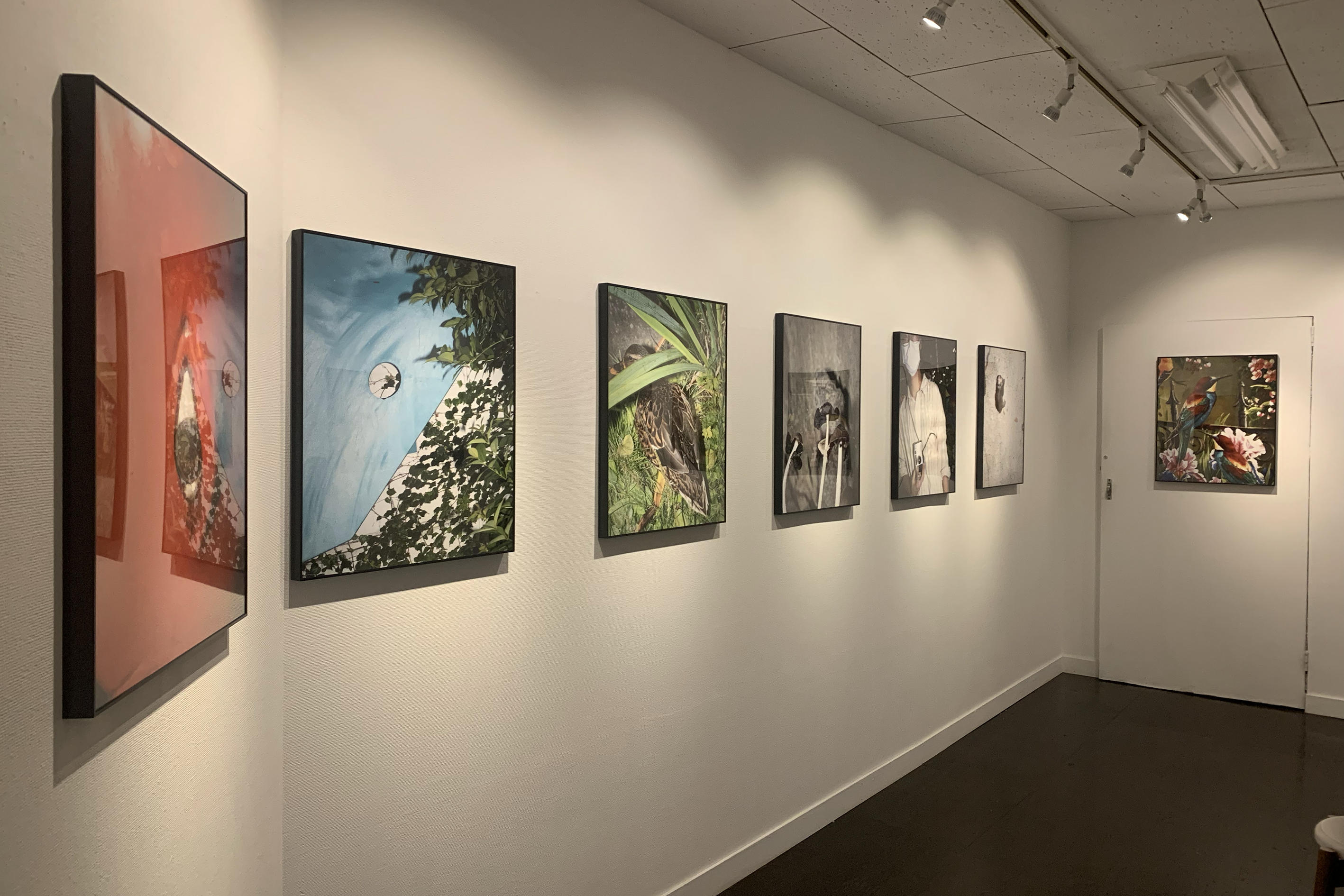
牟田義仁さんは、私が好きな写真家の一人です。
牟田さんは写真集もウェブサイトも、そしてInstagramのアカウントさえ持っていません。牟田さんが写真を共有する手段、そして私が彼の写真を見る唯一の方法は、新宿の3rd District Galleryで開催される展覧会のプリントのみなのです。
同ギャラリーのウェブサイトによると、牟田さんは1996年以降、55回(その内2009年から2022年までで49回)の展覧会を開催しています。私はできるだけ多く展覧会を見ることにしており、いかにも昭和らしい急な階段を4階のギャラリーまで登りながら、いつもワクワクしています。どのような作品であっても、牟田さんの一貫した鋭い視線と揺るぎない編集力は、常に深い満足感をもたらす視覚体験を与えてくれるのです。
このギャラリーでさまざまな展示を開催している上に、牟田さんはコニカヘキサーで撮影した日付入りのモノクロ写真の「Record of Things」シリーズを継続的に発表しています。これらの写真は、ギャラリー内に年代順に展示されています。私が見た他の展示は、杉並区の埋め立てられた下水溝の上の道を撮影した4x5の写真数十枚から、ラングーン(ミャンマーの旧首都ヤンゴンの旧名称)の午後を5時間かけて撮影した素晴らしいスナップショットまで多岐に渡りました。
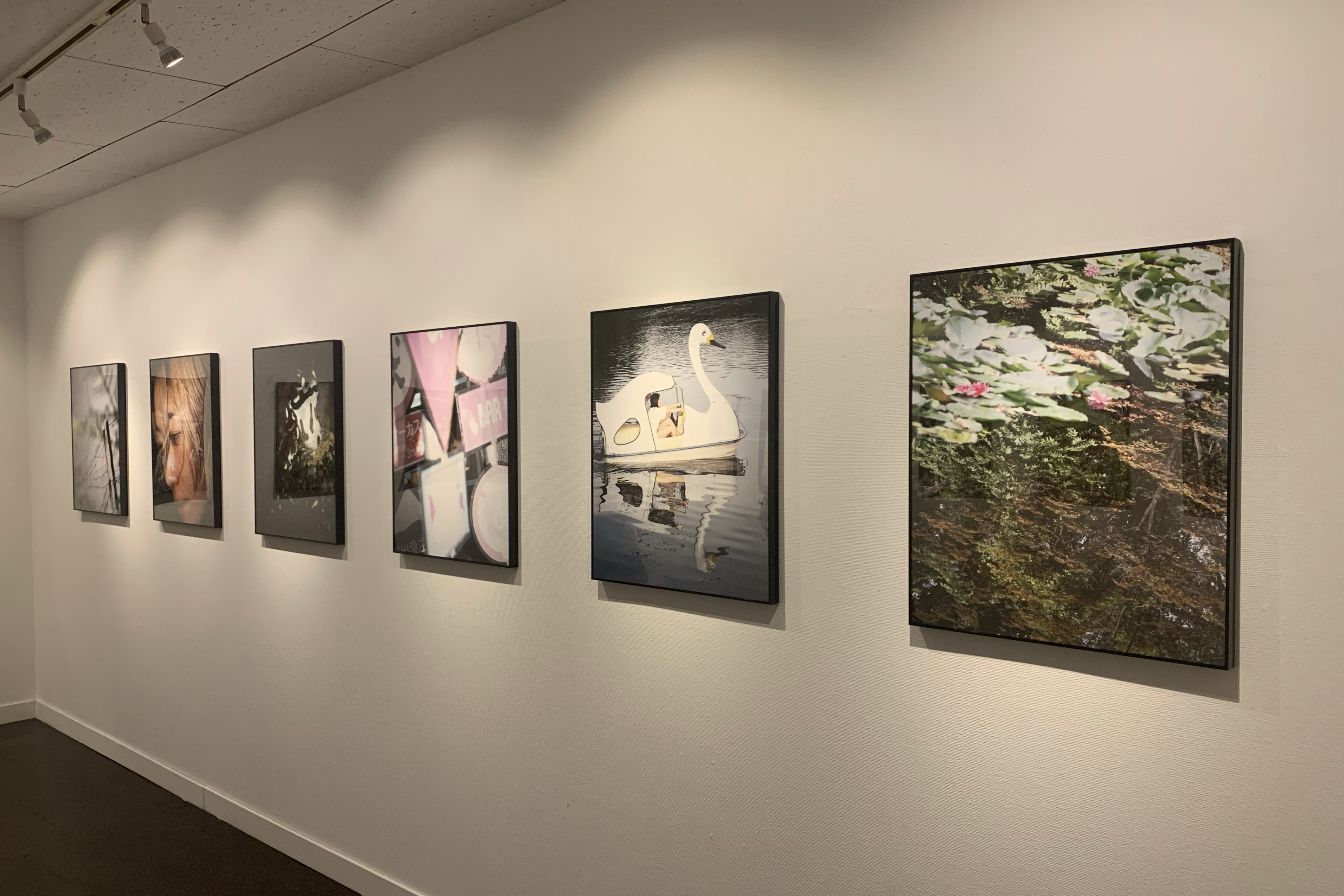
この「アンポンタン・ポカン、陰に陽に」は、牟田さんにしては珍しく撮影はデジタルカメラを使用し、インクジェットプリントで構成されています。面白いことに、約1700万もの人がいる東京都で、私は今年だけで2度、無名の裏通りで牟田さんに遭遇しました。その2回とも、彼はキヤノンのデジタル一眼レフとフラッシュを首から提げていました。
牟田さんの作品は、どんな媒体であれ、シュールレアリスムのオーラを感じさせるものが多いです。「感じさせる」というのは、「突き抜けた謎の透明感に圧倒される」という意味かもしれません。
写真家の作品には、作家の手による計画的な努力が見え隠れし、その結果、作為的で説教臭い作品になりがちなものもありますが、牟田さんはスタイル的な作為を排除しているのです。
彼は「ストレート・フォトグラフィ」を楽しみながら、どのメディア(フィルム、デジタル)も尊重し、それに従うのです。

動きのある写真は稀で、静寂とそのフレーミングが、場所や瞬間の神秘性に対する認識を高めるのでしょう。このような透明感のある写真へアプローチすることは、彼が「アート」において何も隠していないことを表しています。直感と現象とカメラの融合は、魅力的な作品を作るのに十分なものです。彼のような眼があれば、重厚なポストプロダクションは必要ないでしょう。
伝統的なフィルム/銀塩写真が好きな私は、もちろん牟田さんの長年にわたるモノクロプリントへの献身とその絶対的な熟練のファンです。なので、今回のデジタル写真展は、ギャラリーに入る前から何が見られるかどうかわからなかったことがどきどきしました。
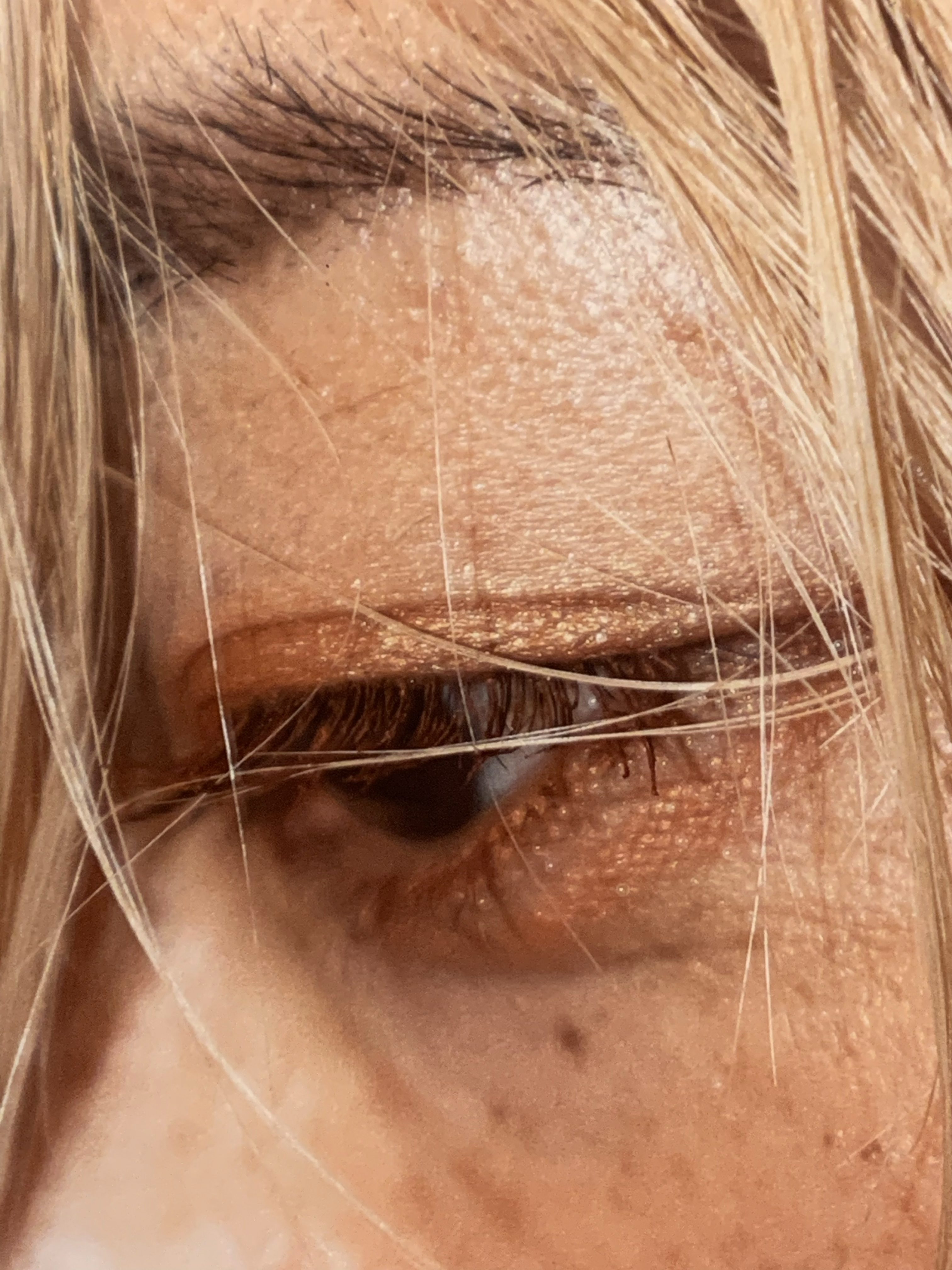
壁には20×24インチの縦長のフレームが17枚並んでいて、その中には鮮明な世界の断片が収められています。デジタルで撮影され、色鮮やかで、縦長で、奇妙なスナップが「オンライン写真」の大部分を占めているのです。
何が違うのだろうかと一瞬思いましたが、確かに、スマホで見るのとは比べものにならないくらい大きい。しかしサイズだけでなく、牟田さんの作品に内在する不思議なオーラがすぐに出てきたのです。モノクロームの写真ではフレーミングや微妙なトーンで表現されることが多いのですが、インクジェットプリントの鮮やかな色調でも同様に強く感じることができたのです。

展示の一枚目は、茫洋とした目つきの写真から始まりました。このようなイメージの始まりから作品の方向性とトーンが定まりました。

「目」はほぼすべてのイメージで強くフィーチャーされています。2度目、3度目と見ていくうちに、「目」の印象はさらに強くなっていきました。サルのような「本物」の目が、登場する数少ない人間の目とつながり、同様に、見る者の目ともつながる。やがて、すべての円や目が「見る」「見られる」という行為を暗示するようになったと同時に、画像の鮮明さと実物より大きなサイズが、細部をより奇妙なものに、そしておそらく見た目以上のものに高めているのです。
ある写真にカメラが写っていますが、そのレンズも単なるガラスの玉だけではない気がします。
牟田さんは写真をストレートに撮っていますが、一見直線的でありながら、重なり合う要素によるある種の阻害が大きな興味となっています。
物事がまっすぐに映し出されているのものの、常に何かほんの少しズレていることで、それぞれのイメージにエネルギーが与えられているのです。私が一番好きな写真、そして今年の写真展の中で一番面白かったのは、点滅する道路標識の間に、マネキンの頭が影から見えている写真です。すごかった。
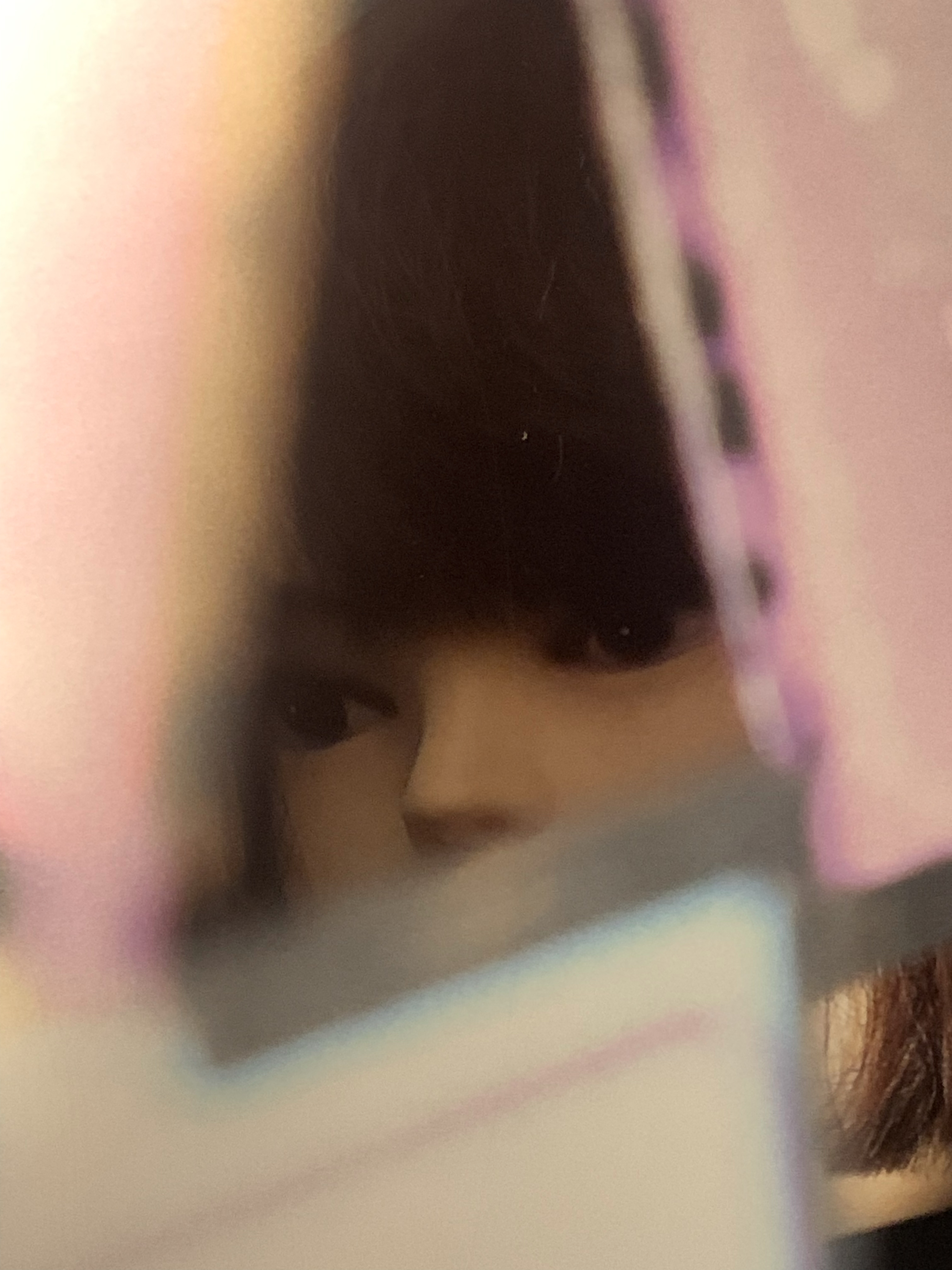
この作品は、牟田さんが生涯をかけて作り続けてきた、止むことのない絵のモザイクの中の素晴らしい作品です。
牟田さんは、須田一政さんに匹敵するほどの量と質のアーカイブを持ちながら、まだ比較的無名で未発表の写真家です。チャンスがあれば、私はいつか彼の写真集を棚に並べたいと思っています。
思うに牟田義仁さん本人の写真関心は、何よりもまず、自分のペースで、自分の写真の道を歩み続けることにあるのでしょう。
やっぱり、本当のアーティストはこれ以上、何を望むのだろうか?
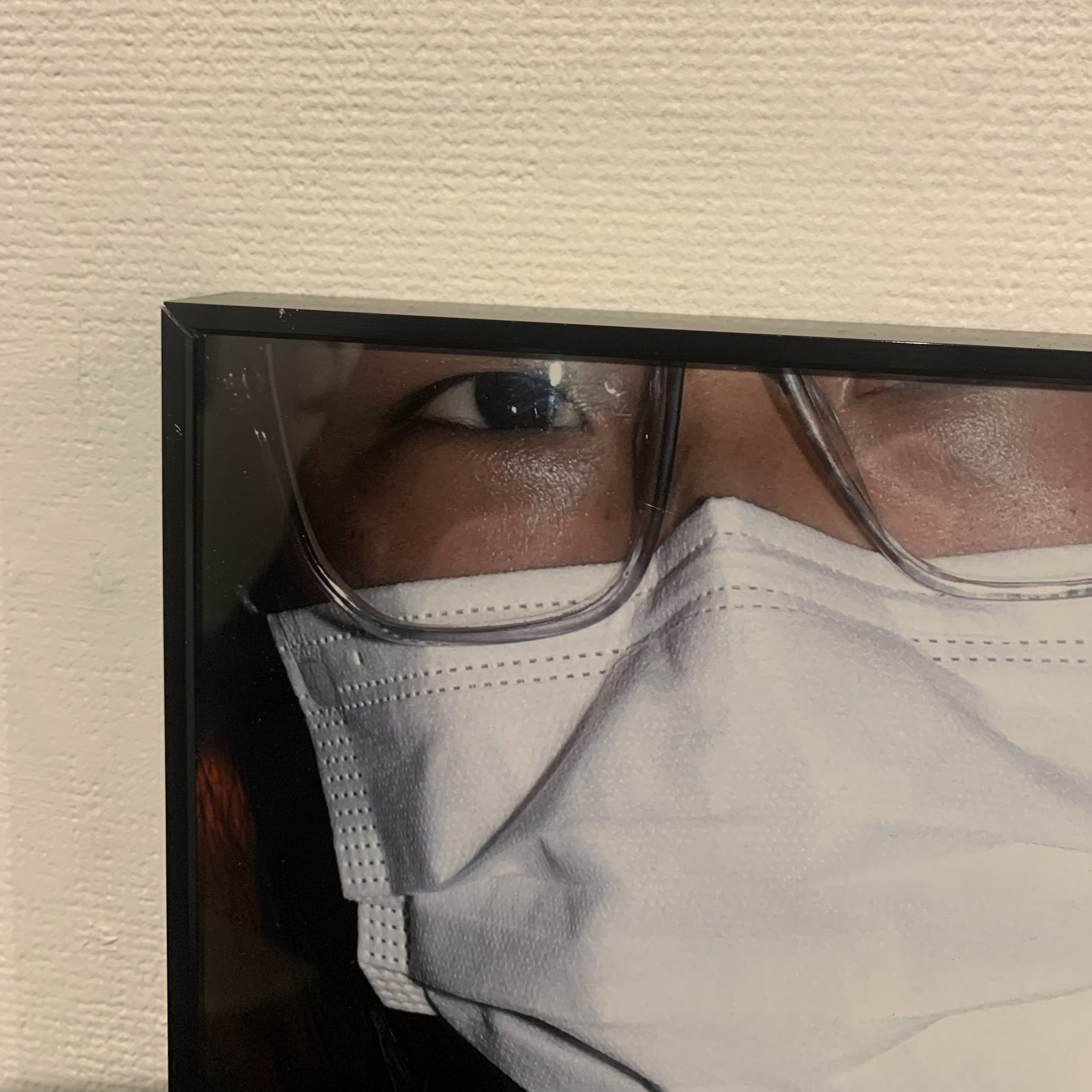
- 牟田義仁 Muta Yoshihito
- 「アンポンタン・ポカン、陰に陽に」
- Anpontan Pokan, Yin and Yang
- 2022年11月1日〜13日
- 3rd district gallery
- 35mmデジタルカメラ・カラーインクジェットプリント 20×24インチ・17枚
 Vol.41 中嶋琉平|Ryuhei Nakashima「Asia, New York, and Tokyo」、高地二郎|Jiro Kochi「GINZA: Through the eye of a Salaryman 1950-1990」
2025/11/08
Vol.41 中嶋琉平|Ryuhei Nakashima「Asia, New York, and Tokyo」、高地二郎|Jiro Kochi「GINZA: Through the eye of a Salaryman 1950-1990」
2025/11/08
 Vol.40 藤岡亜弥|Aya Fujioka「Life Studies」、荒木塁|Lui Araki 「Color/Scape」
2025/10/03
Vol.40 藤岡亜弥|Aya Fujioka「Life Studies」、荒木塁|Lui Araki 「Color/Scape」
2025/10/03
 Vol.39 榎本八千代|Yachio Enomoto「家族写真 / Family Photo」
2025/09/05
Vol.39 榎本八千代|Yachio Enomoto「家族写真 / Family Photo」
2025/09/05
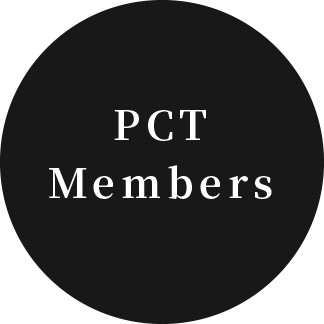
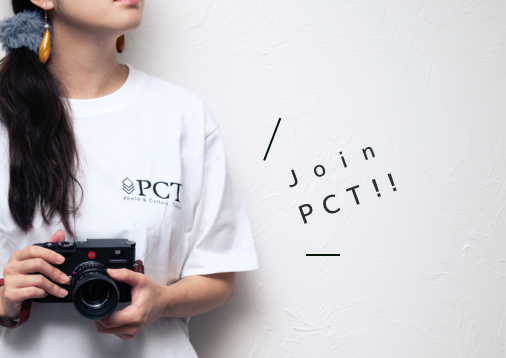
PCT Membersは、Photo & Culture, Tokyoのウェブ会員制度です。
ご登録いただくと、最新の記事更新情報・ニュースをメールマガジンでお届け、また会員限定の読者プレゼントなども実施します。
今後はさらにサービスの拡充をはかり、より魅力的でお得な内容をご提供していく予定です。
 「Photo & Culture, Tokyo」最新の更新情報や、ニュースなどをお届けメールマガジンのお届け
「Photo & Culture, Tokyo」最新の更新情報や、ニュースなどをお届けメールマガジンのお届け 書籍、写真グッズなど会員限定の読者プレゼントを実施会員限定プレゼント
書籍、写真グッズなど会員限定の読者プレゼントを実施会員限定プレゼント